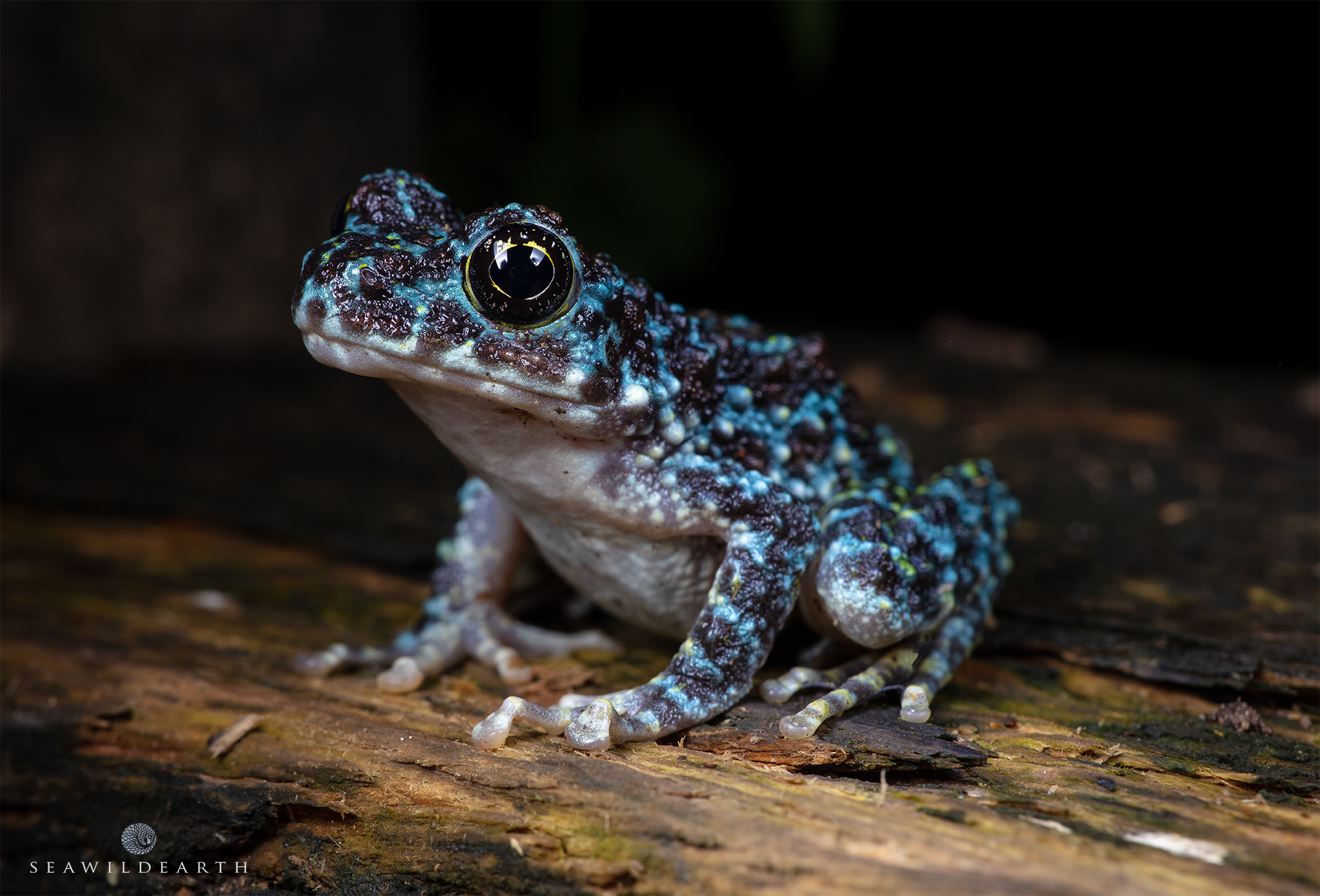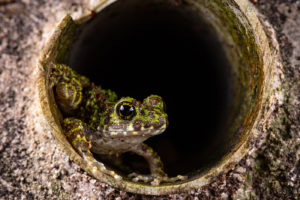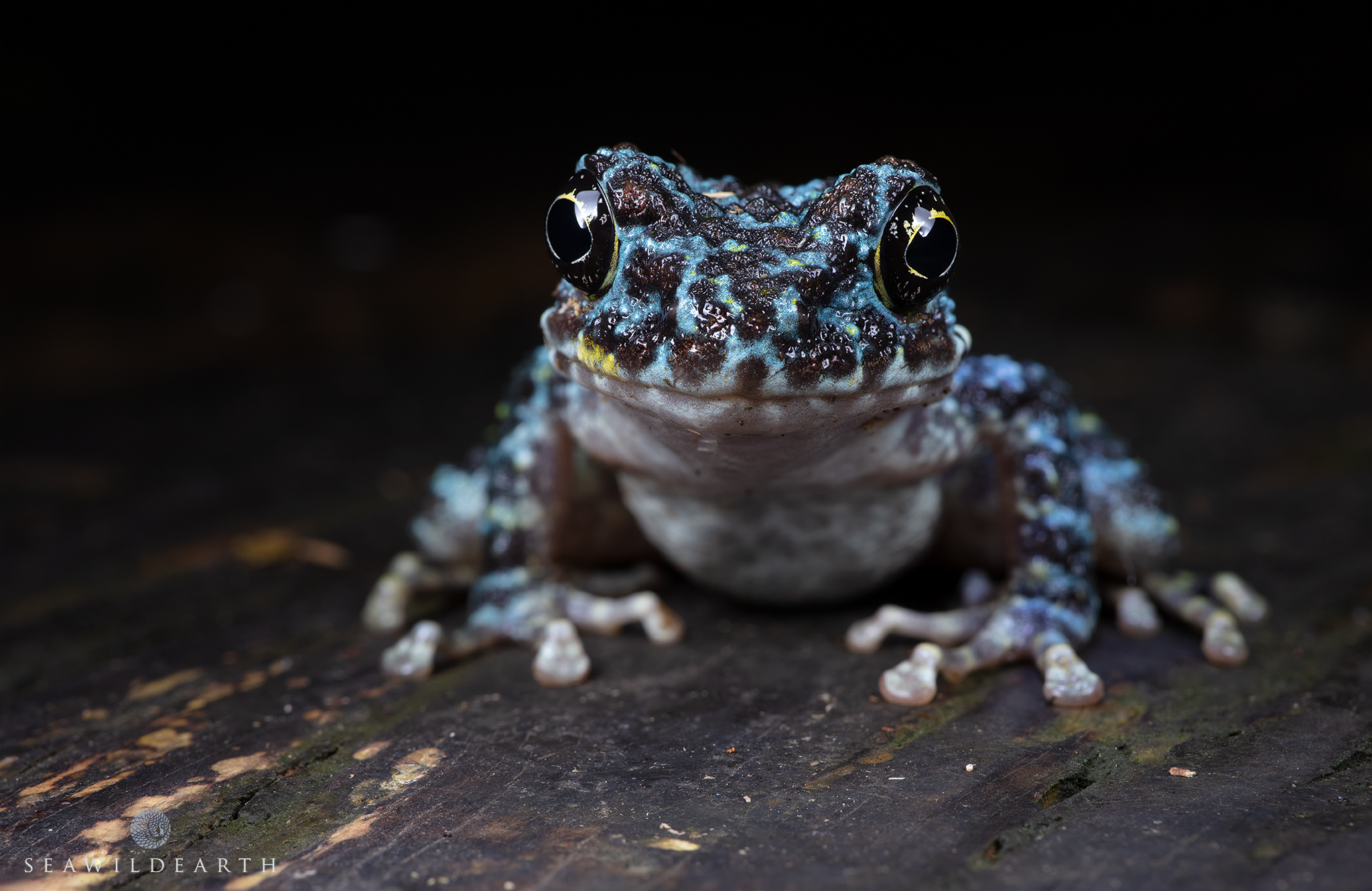The Holy Grail is Blue
After four years of looking and hoping I finally stumbled upon the Blue morph of Ishikawa's Frog. My photographic bucket list has one more tick added.
If there has been one thing that's evaded me since my arrival in Okinawa just over four years ago it's been finding and photographing not just Ishikawa's Frog but more so the blue morph of this ridiculously scarce amphibian. I've poured over tidbits of information and read up on it's preferred habitat, mating season and places to hide. I have recordings of its call and have wandered along jungle paths and shallow streams playing those calls from my iPhone. All to no avail. That was until a recent wildlife trek that took me along a river that I'd never previously walked. I had very recent to that time managed to locate and photograph the Green morph of Ishikawa's Frog, to get the Blue would be the icing on the cake.

The Blue morph of Ishikawa's Frog, for me the Holy Grail of my photographic accomplishments to date here in Okinawa.
Having encountered the Green morph of Ishikawa's Frog just a few weeks prior at a favored stomping ground in the Northern confines of the island I'd upped the intent to look more for the rarer Blue morph. Changing location and concentrating more at higher altitudes as many behavioral studies suggest being the preferred habitat for this critter. With higher altitude comes more rock walking, river obstacles and small waterfalls to cross. I didn't mind, if it meant being able to snag this incredible subject then bring it on.

Ishikawa's Frog, Green Morph.
Ishikawa's Frog is ordained as a National Living Monument in Okinawa and rightly so. Often referred to as Japan's most beautiful frog it is both picturesque and incredibly rare. I consider myself quite fortunate to have found this particular critter. My encounter with the Green morph of this species was recently documented in a Blog Post which you may be interested in reading.
To the task at hand. On this night I'd set out to clamber through a range of environments. Starting out on Tarmac and then heading into jungle pathways and ultimately a flowing river resplendent with water obstacles and waterfalls. With every slip, splash and near tumble I convinced myself it would all be worthwhile. The sound of the main waterfalls drowned out all other ambient sound. I'd made it to the point where I could go no further, not because I was tired but more so due to a 60ft waterfall and sheer rock wall that blocked any further journeying into the green expanse of the Yambaru. Thus far no Ishikawa's Frogs had been spotted. I started to realize, that like so many failed attempts prior, that this hunt would once more bear fruitless.
Turning back I opted to switch to the riverside walkway that meandered through the dense jungle and skirted the river at times offering a great vantage point from where to scan the area using my trusted headlamp. Somewhat downhearted I set my mind for the return trip. Climbing the steps of the walkway my head filled with images of what could have been, composition options, camera settings. Stepping over a blue mottled frog I had thoughts about the .......... a blue mottled frog? WAIT.

Slowly turning, looking at where I'd just stepped. Staring back at me, the bulbous eyes, the mottled coloration, the almost toad like texture of its skin. An Ishikawa's Frog, but not just any Ishikawa's Frog. Right in front of me, on the last surface I would ever expect to find one, a Blue morph Ishikawa's Frog sat watching the World go by. My movements became labored, as they always do when I encounter rare wildlife. Hoping my movements wouldn't spook it before I grabbed and set up my camera. Sliding into place I was happy to note that this guy seemed to have the same relaxed temperament as the Green morphs I had photographed almost two weeks prior.
Many, if not most, Frog species I encounter here are pretty skittish with human approach. Maybe due to them being on the 'hit list' of most predators on the island suggests itself as a pretty good reason why that is. But this guy? Solid as a rock. Didn't bat an eyelid. Do Frogs have eyelids? I moved with the deft precision of a military sniper. Slow, calculated. With each photograph I held my breath to ensure utmost stability. I didn't have the conviction to check my LCD as I was confident of my settings. I also didn't want that additional movement to be the reason why the guy hopped away. With a couple of good shots in the bag I then opted to try and shoot a focus stack of 6 images.
A focus stack is basically a succession of images that each use different focus points, normally accomplished by advancing the camera 'through' or away from a subject where the focal planes overlap. Each of these focused areas are then collected and lumped together in one image to give a greater appearance of depth to an image that would otherwise be impossible when shooting a single macro photographic image. All down to the physics of close working distances and focal lengths. I won't bore you with the details on that.
Needless to say, stoked is not a word I use lightly. To now have this iconic species in the camera bag so to speak allows me to focus on the next subject. I've only ever seen one Okinawa Coral Snake, let the hunt begin!
"To cherish what remains of the Earth and to foster its renewal is our only legitimate hope of survival."
Wendell Berry
About the Author
Internationally recognized as a provider of quality mixed media Mark Thorpe is always on the search for captivating content.

Photographer / Cameraman
Mark Thorpe
Emmy Award Winning wildlife cameraman and Internationally published landscape photographer Mark Thorpe has been an adventurer since he could walk! Spending 17yrs as an Underwater Cameraman at the start of his imaging career the highlight of which was being contracted to work with National Geographic. In that role as a field producer and cameraman he's been privy to a mixed bag of hair raising adventures. For some reason he was always selected for projects relating to large toothed marine predators such as Great White and Tiger Sharks, Sperm Whales and Fur Seals. Additionally he has also been active within Southern Africa on terrestrial projects dealing with a wide array of iconic wildlife.
Currently based in Okinawa, Japan he's always on the lookout for his next big adventure. He shares his exploits online with a totally organic social audience in excess of 200,000. Sponsored by a number of photographic industry manufacturers he is constantly scouring the islands for captivating landscape and oceanscape compositions. Videography wise he continues to create short photographic tutorial videos as well as creating content about the diversity of wildlife within Okinawa and the Ryukyu Islands of Southern Japan.
Mark has just created a Patreon channel where he's hoping to raise an audience of supporters who through small monthly shows of appreciation will allow him to concentrate on the creation of a wildlife and landscape imaging themed YouTube Channel. If you feel that is something you'd like to support you can visit his Patreon Channel for more information.
